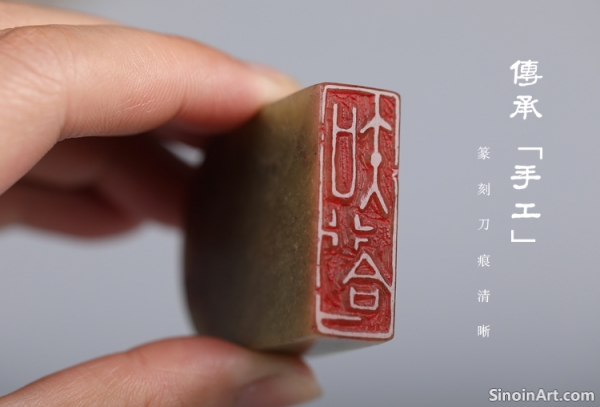Inscriptions on Leisure Seals: Reflecting Personal Philosophies
|
The inscriptions on xiánzhāng are a rich tapestry of thoughts, emotions, and personal philosophies. Unlike name seals or studio seals with their functional purpose, leisure seal inscriptions are chosen for their personal significance and ability to capture a specific mood or idea. The inscriptions can come from many sources, often reflecting the personal philosophy of their owner.  Many leisure seal inscriptions draw from classical Chinese literature, incorporating quotes from famous poems, essays, or philosophical texts. These literary allusions allow the owner to express their appreciation for the rich cultural heritage and to connect with a broader tradition of artistic and intellectual pursuit. The literary sources are central to many of the inscriptions.  Inscriptions may also express the owner's personal philosophies or beliefs. Phrases reflecting concepts such as balance, harmony, simplicity, or freedom are common choices. The inscriptions reflect the owner’s thoughts, values, and personality.  Some leisure seals feature humorous or playful inscriptions, reflecting the owner's sense of wit and their desire to approach life with a lighter attitude. These seals challenge the often formal tone of other types of seals, demonstrating that the art form has a range of possibilities. The seals are a reminder that life should be enjoyed. The selection of calligraphy is just as important as the inscription itself. Different script styles, such as seal script, running script, or clerical script, add layers of meaning and aesthetic dimension to the inscription. The selection of calligraphy is central to expressing the overall meaning of a seal. The inscriptions on leisure seals offer a glimpse into the minds and hearts of their owners. They are reflections of personal values, intellectual interests, and creative passions, adding a unique and meaningful dimension to the art of seal carving. They are a reflection of personal ideals, and of the owner's interests and personality. |
Tag : Leisure Seal Inscriptions, Xian Zhang Text, Seal Mottos, Chinese Philosophy, Seal Poetry
Related information
- Inscriptions on Collector's Seals: Unveiling Taste and Connoisseurship
- The Calligraphy Connection: Scripts in Chinese Seal Design
- The Materials of Collector's Seals
- Materials for Collector's Seals: Reflecting Status and Artistic Value
- Seal Carving Around the World: Cross-Cultural Influences
This article delves into the various types of inscriptions found on collector's seals, exploring how they reveal the collector's knowledge, taste, and personal connection to the art they own.
Explore the deep connection between Chinese calligraphy and seal carving. Learn about different scripts like Seal Script (zhuanshu) and Clerical Script (lishu), and their influence on seal designs.
The materials used to create collector's seals can range from the humble to the luxurious, reflecting the owner’s financial status and artistic preferences. The material used in a seal often serves to signify the wealth and prestige of the collector.
This article explores the various materials used in the creation of collector's seals, discussing how they reflect the collector's status, aesthetic preferences, and their approach to art collecting.
This article explores the global reach of Chinese seal carving, highlighting its influence on other cultures and the cross-cultural exchange that continues to shape its evolution.